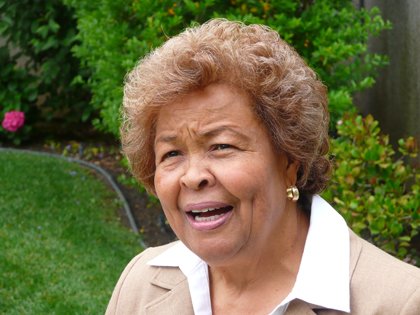Dr. Dorris S. Woods, a clinical nurse and college professor went to the doctor for a routine physical examination, and was shocked at the news she was told. “I was told I was pre-diabetic for Type 2 Diabetes,” she recalled. “I couldn’t believe it. I should have known my blood sugar was climbing, but had not paid attention to it. However, after I found out, I started working on it. My doctor told me all I had to do was to lose some weight and exercise.”
She added, “Some doctors are treatment-oriented, as opposed to being prevention-oriented, which is needed. They need to be telling their patients what they need to do to prevent diseases. In my case, my doctor told me what I needed to do, and I did it. As a result, I have been able to prevent developing Type 2 Diabetes.”
The Centers for Disease Control and Prevention (CDC) estimates that as many as 79 million adults in the United States are pre-diabetic, a condition that increases the risk of developing Type 2 Diabetes.
In addition, the CDC estimates that another 26 million adults in America already have Diabetes. Native Americans, Asian-American, African-Americans and Mexican-Americans are at higher risk for developing the condition due to genetics. Adults over 45 years of age are also at risk.
“Pandemic levels of obesity have triggered epidemic levels of diabetes,” said Dr. Woods. “Many serious conditions such as heart attacks, strokes, kidney failure, and amputations are related to diabetes. Millions of people are not aware they have diabetes, or are pre-diabetic.”
Dr. Woods said she was able to prevent the development of Type 2 Diabetes through portion control, weight loss, diet, and exercise. In an effort to help others, she decided to write a book entitled, “How to Prevent Diabetes – I Beat It and You Can, Too!”
Throughout the 153-page book, Dr. Woods also provides a simple but effective plan of action that readers can follow to reduce their own chances of becoming diabetic, or bringing their diabetes under control.
“I thought a lot of people could use the information in book form,” she said. “I thought it would be good for people to have something in their hands as opposed to just listening to a doctor. They can see what I did, and know that I am walking in their shoes. The book is factual, but simply written. I also wrote the book because of my credentials.”
Dr. Woods holds a license in advanced clinical practice in nursing. She also holds a bachelor’s degree in Nursing and Psychology from Indiana University, a bachelor’s degree in Psychology from Regents College, two master’s degrees from UCLA – one in Pediatrics and Nursing Administration, and the other in Mental Health.
The Mississippi native holds a master’s degree in Counseling from California State University, Los Angeles, as well as a Ph.D. in Higher Education
Administration from Claremont Graduate University. She ranks among the top five percent of people educated in America holding six college degrees, and is a diabetes educator.
“I was astonished at the number of people with Diabetes,” said Dr. Woods who resides in Culver City, CA. “In Los Angeles, it was much higher in the poverty areas. The biggest thing is for people to get tested. A person can’t just sit around and let fat accumulate in their bodies and cause diabetes.”
She added, “There is a decline in the efficiency of body organs at the age of 45. A person does not have the same type of body that they had at age 25. A person has to do more, because the body is no longer able to do it as efficiently for them.”
Type 1 Diabetes is usually diagnosed in children and young adults, and was previously known as juvenile diabetes. In Type I Diabetes, the body does not produce insulin. In Type 2 Diabetes,
either the body does not produce enough insulin or the cells ignore the insulin.
Insulin is necessary for the body to be able to use glucose for energy.
“The biggest problem I found in gathering information to write the book has been diet – too much fast food, large portions, not cooking the right food, and a lot of starch,” said Dr. Woods. “I would like to see people become more aware of the problems and to start eating healthier. That means people need to eat more vegetables, and less refined sweets. My goal is to highlight the problem, and provide attainable solutions to a disease that can be prevented.”
“How to Prevent Diabetes – I Beat It and You Can, Too!” is available on Amazon and Barnes & Noble and sells for $13.95. E-books are also available on Kindle.
For more information visit: www.How-to-beat-diabetes.com.
